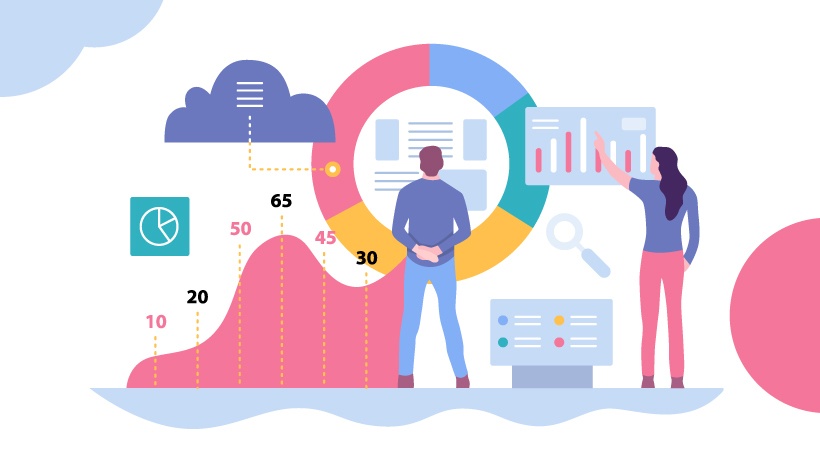The Importance Of Learning Analytics For Different Organizational Levels
Learning analytics is the measurement and analysis of data that is used to develop insights that can improve online learning experiences. In the beginning, this data was simpler and focused on measuring data points such as completion rates and user participation.
This information is still important, however, today learning analytics provides a much deeper analysis of learner patterns and behaviors. This information is useful for L&D professionals at all levels and assists them in creating the most successful online employee development programs.
Quality Learning and Development programs are high in demand. In fact, professional development opportunities are one of the top factors employees consider when they look for a new job. Today’s job seekers want to work for organizations that invest in their futures and skill development. The best L&D programs offer blended learning programs that are personalized and use several different training styles and methods to deliver training. This means they use a blend of on-the-job and online learning opportunities.
eLearning programs for employees have been increasing across most industries. In fact, many organizations dedicate large portions of their L&D budgets to eLearning. According to LinkedIn’s most recent Workplace Learning Report, 59% of talent developers spent most of their budgets on online training [1]. Analyzing and measuring learner data can help organizations improve their eLearning training programs in a number of ways.
The Benefits Of Using Data To Improve Employee Development Programs
One of the key benefits of using analytics to improve employee training is that it gives L&D professionals the information they need to identify what is working and what is not. For example, analytics can be used to identify if a large number of employees are struggling with a particular training topic. They will know if they need to revise a particular piece of training. This increases the effectiveness and speed of training.
Analytics also lowers costs by increasing efficiency. By revising or removing segments that are not adding value to the learner's experience, L&D professionals can improve the overall ROI of the training program.
Another benefit of advanced learning analytics is its ability to help customize training content. One of the toughest challenges L&D professionals face is trying to create content that is relevant and appealing to a diverse audience.
Employees often have different knowledge levels and learning preferences. Analyzing learner patterns is the first step toward creating personalized learning paths that deliver content in a way that best suits each individual.
Providing customized training programs that deliver quality learning experiences has been proven to improve employee performance, satisfaction, and retention rates.
Utilizing Learning Analytics Across Every Level Of L&D
There are two types of learning analytics you should know about. The first is descriptive analytics that tracks a learner’s patterns and behaviors and the second predicts their future actions and responses. Both of these types of analytics can provide valuable insights for L&D professionals throughout your entire organization.
Instructional Designers can use analytics to improve learning experiences by observing data about learner patterns. For example, they can measure how much of a course is completed and look for areas where employees may be stuck or losing interest. Many Instructional Designers also use analytics to determine user satisfaction rates.
LMS administrators often use analytics for the purposes of understanding which content is being consumed and what users are no longer accessing. They can also collect basic but useful information such as how many users are actively using the platform.
Instructors can use analytics to measure engagement and knowledge retention. Analytics can give them context for the purposes of a better understanding of their students. There are some tools that even measure how attentive someone is during training and when they are accessing training content.
Analytics managers can use analytics to gauge the impact the training has on employee performance. This way they can determine which training content is the most effective and engaging.
CLOs can use the data to measure the true cost per learner. This will help them determine how efficient the department is running and calculate the ROI of their organization’s training programs.
Conclusion
Providing quality learning experiences for your employees will give your company a competitive advantage by improving employee productivity and retention. 94% of employees will stay at a company longer if they feel that the organization has invested in their career development [1].
The highest quality training programs provide opportunities for online learning to engage their employees. Learning analytics has become an essential tool that can be used for a variety of L&D functions. In addition to reporting data from machine learning, today learning analytics is about much more than basic collection and analysis reporting. Analytics assist L&D professionals in gaining a deeper understanding of learners and their contexts.
Many analytics systems have advanced reporting capabilities. These reports can help L&D teams identify employee trends and patterns much more quickly than manually analyzing learner data. These reports can identify specific useful data points such as which learners are top performers and who are struggling. They can also identify which content employees prefer and which concepts they are struggling to grasp. This provides organizations with the opportunity to use what they find about learner preferences to enhance and optimize their training programs.
Understanding learning and the online environments in which it occurs will make it easier for Learning and Development teams to improve both teaching and learning experiences so employees can quickly improve their skillsets and performance on the job.
To learn more about the value of learning analytics check out the eBook The Power Of Learning Analytics: Measuring L&D Outcomes For Business Performance. If you're curious about how to use learning analytics for remote workforce engagement, join the webinar, too!
References:

